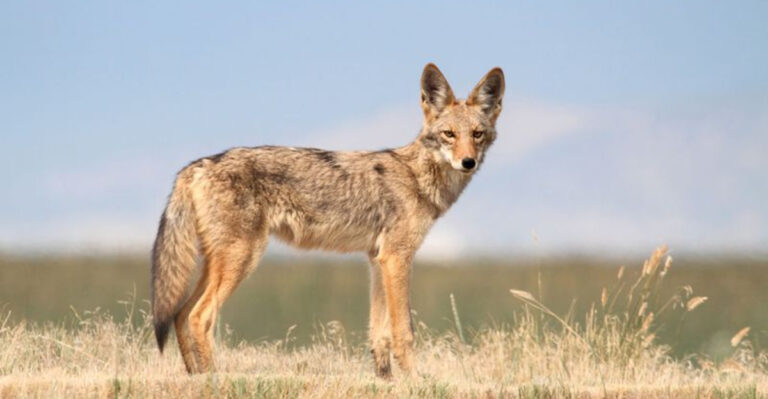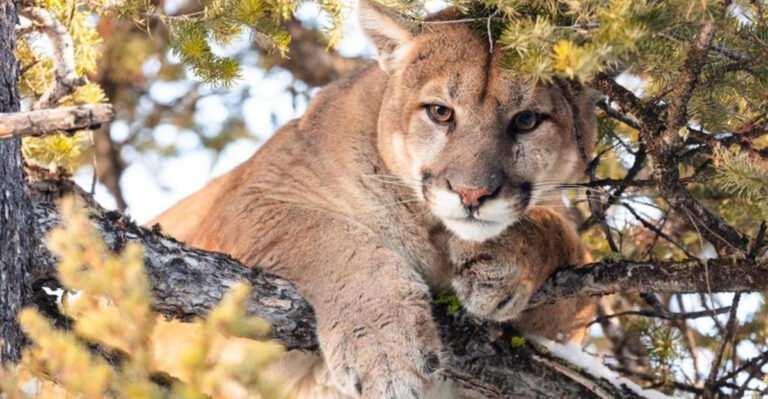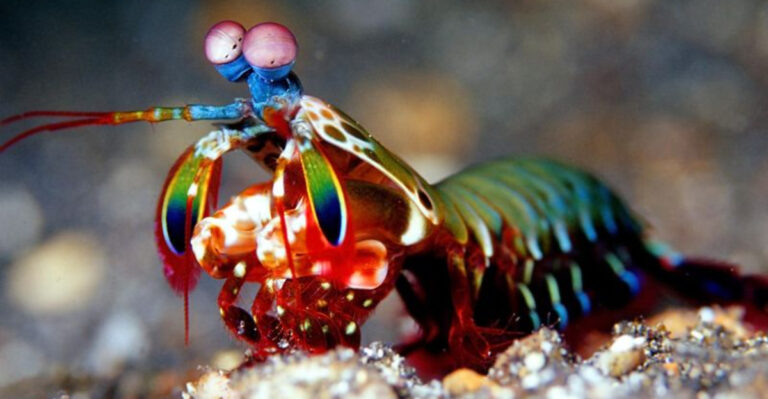10 Speediest Land Animals That Will Amaze You
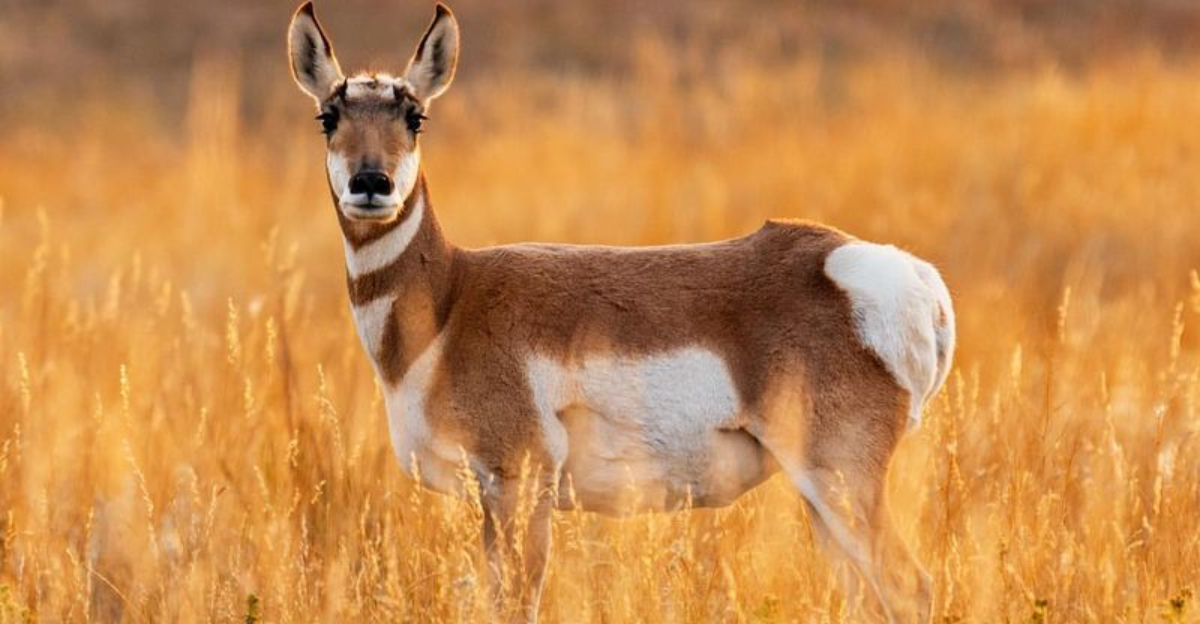
Join us on an exciting journey to discover the fastest land creatures in the animal kingdom. They’ve developed unique physical and behavioral traits to help them hunt or escape predators.
Let’s dive into the secrets behind their incredible swiftness.
1. Hare

Hares are incredibly fast, capable of reaching speeds up to 45 mph.
With their long ears and strong hind legs, they are well-equipped to escape predators, using zigzag patterns to confuse threats.
Their large hind legs provide powerful propulsion, allowing for quick acceleration when needed. Hares thrive in open areas where they can spot danger early, and their sharp senses help them detect predators like foxes and birds of prey.
Relying on speed for survival, these solitary animals can quickly reach their top speed to evade danger, showcasing the power of adaptation in the wild.
2. Greyhound
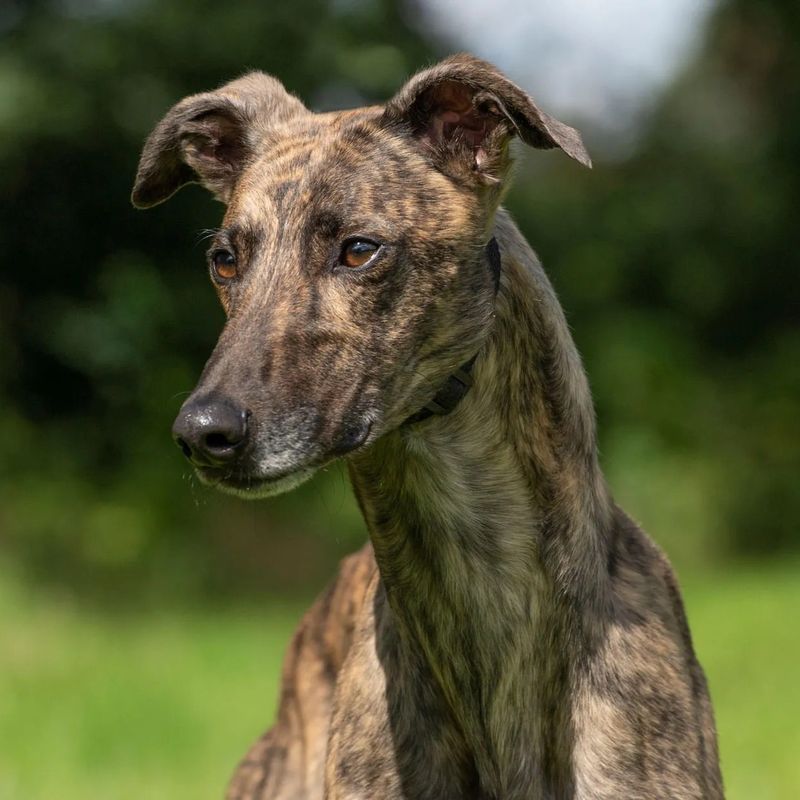
The greyhound is the fastest dog breed, capable of reaching speeds up to 45 mph.
Bred for hunting and racing, their sleek bodies and long legs are built for speed and agility, with a flexible spine that allows for extended strides. O
ff the track, greyhounds are gentle and calm pets, known for their peaceful demeanor. They excel in short bursts of speed, making them sprinters rather than long-distance runners.
Celebrated in the racing world for their speed and grace, greyhounds owe their incredible abilities to centuries of selective breeding focused on enhancing both agility and velocity.
3. Springbok
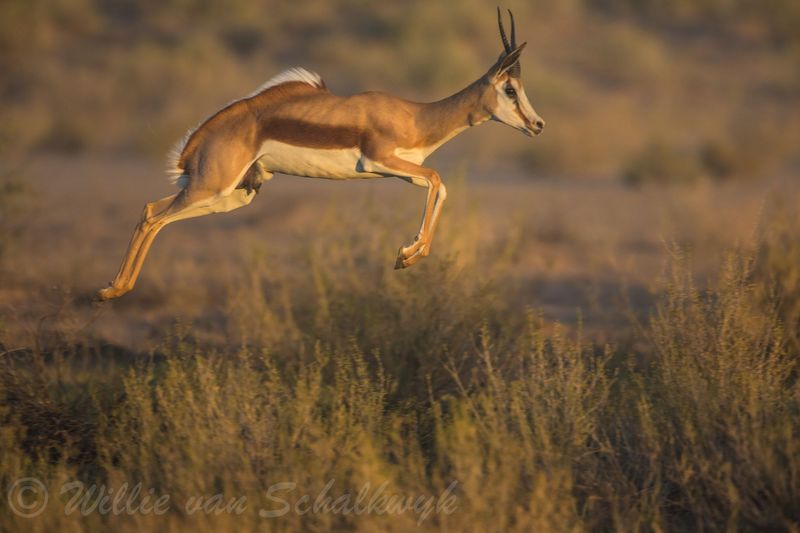
The springbok is renowned for its speed and leaping ability, reaching speeds of up to 55 mph.
Native to southern Africa, it is famous for “pronking,” a behavior where it leaps with stiffened legs, confusing predators and showcasing its fitness.
Adapted to arid environments, springboks can go without water for weeks, relying on their speed and agility to evade predators like cheetahs and lions.
These social antelopes form large herds, which provide added protection. With lean bodies and strong legs, springboks are built for quick bursts of speed, enabling them to escape danger swiftly.
4. Pronghorn Antelope
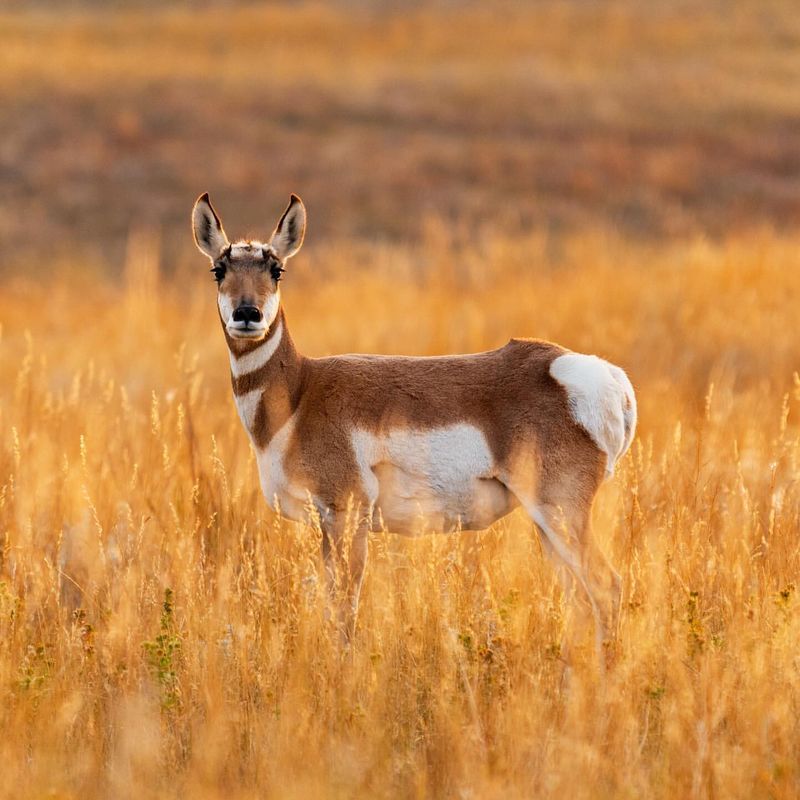
The pronghorn antelope, native to North America’s open plains, is a remarkable sprinter, reaching speeds of up to 55 mph. Its large lungs and heart give it exceptional stamina, allowing it to maintain high speeds over longer distances than even a cheetah.
This endurance helps it escape predators like coyotes and wolves. Pronghorns have evolved efficient respiratory and circulatory systems to support their fast-paced lifestyle, while their sharp vision helps detect distant threats.
Though often called antelopes, pronghorns are unique to the Americas, highlighting an evolutionary path centered on speed and endurance.
5. African Wild Dog
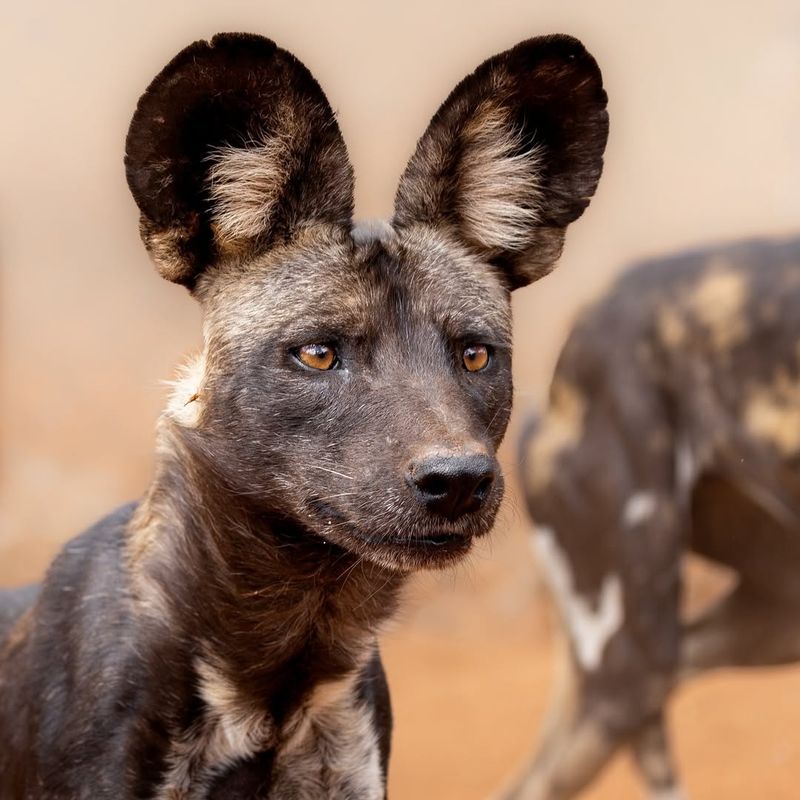
The African wild dog, often overlooked, is one of the most efficient hunters in the animal kingdom, thanks to its speed and stamina.
They can sustain speeds of up to 44 mph over long distances, allowing them to chase down prey with relentless determination.
These social canids hunt in packs, coordinating their movements to corner and capture their target.
Their unique mottled coats provide excellent camouflage in the savannah, making them both elusive and effective.
6. Quarter Horse
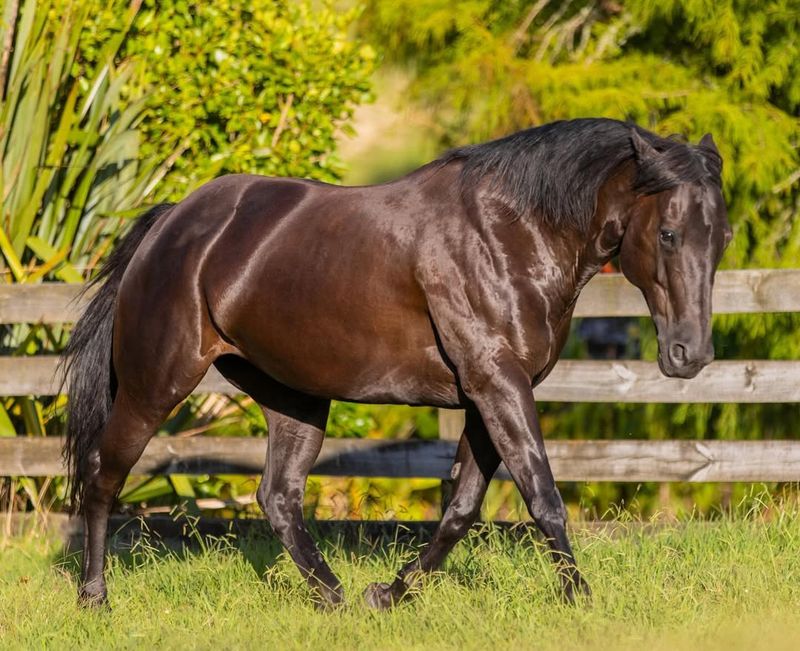
Renowned for its speed over short distances, the Quarter Horse is a marvel of equine agility.
Capable of reaching speeds of up to 55 mph in sprints, these horses are often seen in rodeo events, where their quick acceleration and nimbleness shine.
Their name is derived from their ability to outpace other breeds in quarter-mile races. Watching a Quarter Horse in action is a thrilling experience, as it effortlessly glides across the terrain with grace and power.
7. Wildebeest
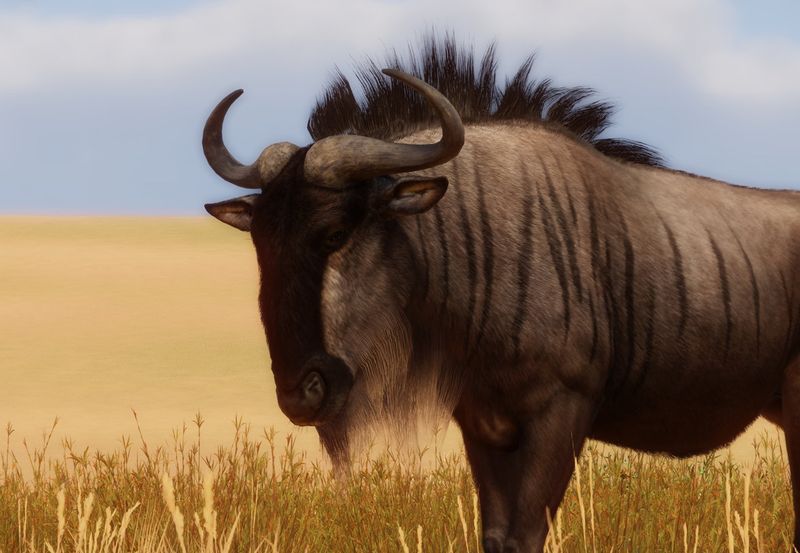
The wildebeest is a strong runner, capable of reaching speeds up to 50 mph.
Known for their vast migrations, these animals travel in large herds across the African plains, using their speed to outpace predators.
With a robust build and powerful legs, wildebeests are capable of sustained running over long distances, an essential trait for migration.
They rely on group dynamics for protection, as predators often target isolated individuals. Their speed is crucial for safely navigating the challenging migratory routes and reaching grazing lands for survival.
8. Ostrich
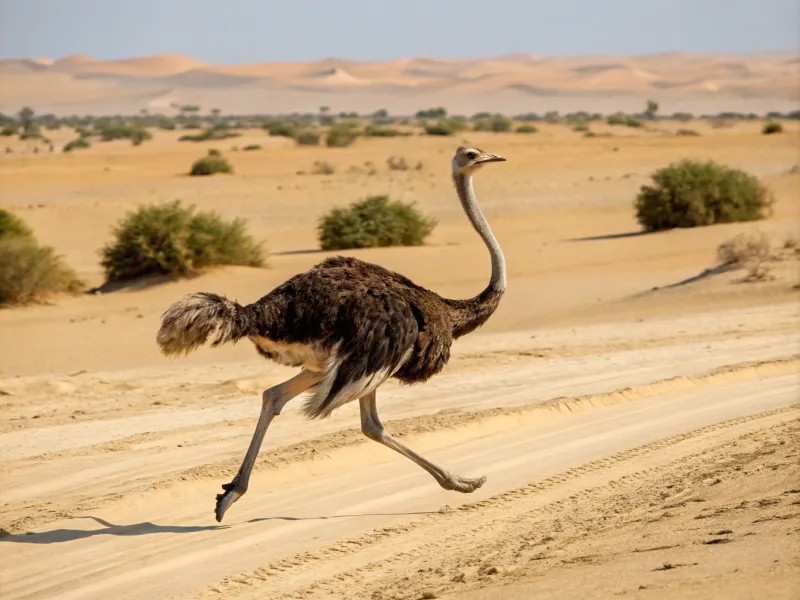
The ostrich is the fastest bird on land, capable of reaching speeds up to 45 mph.
Native to Africa, these flightless birds use their strong, long legs to cover vast distances quickly, thriving in open landscapes where speed is key to evading predators.
Their large eyes offer excellent vision, allowing them to spot danger from afar. Despite their size, ostriches are surprisingly agile, able to make sharp turns while sprinting, and use their wings for balance.
With their incredible speed and powerful kicks, ostriches are formidable defenders, ensuring their survival in the wild.
9. Lion
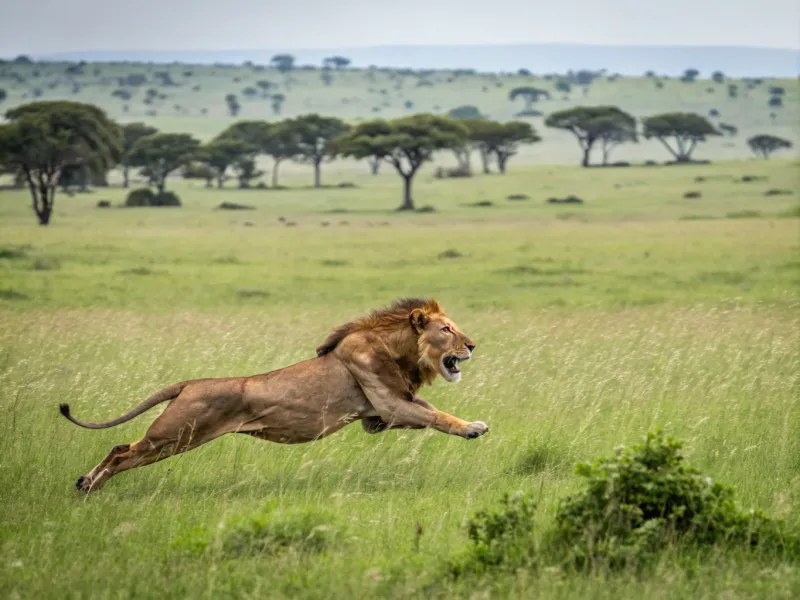
The lion, often called the “king of the jungle,” can reach speeds of 50 mph, but only in short bursts.
They use this speed for hunting, relying on teamwork and stealth to get close to their prey before launching a swift attack.
Their powerful muscles enable quick acceleration, making them formidable predators. As primarily nocturnal hunters, lions take advantage of the cover of darkness to hunt cooperatively, working together to corner their prey.
Though not built for endurance, their strength and strategic approach allow them to make up for their brief bursts of speed with well-coordinated attacks.
10. Cheetah
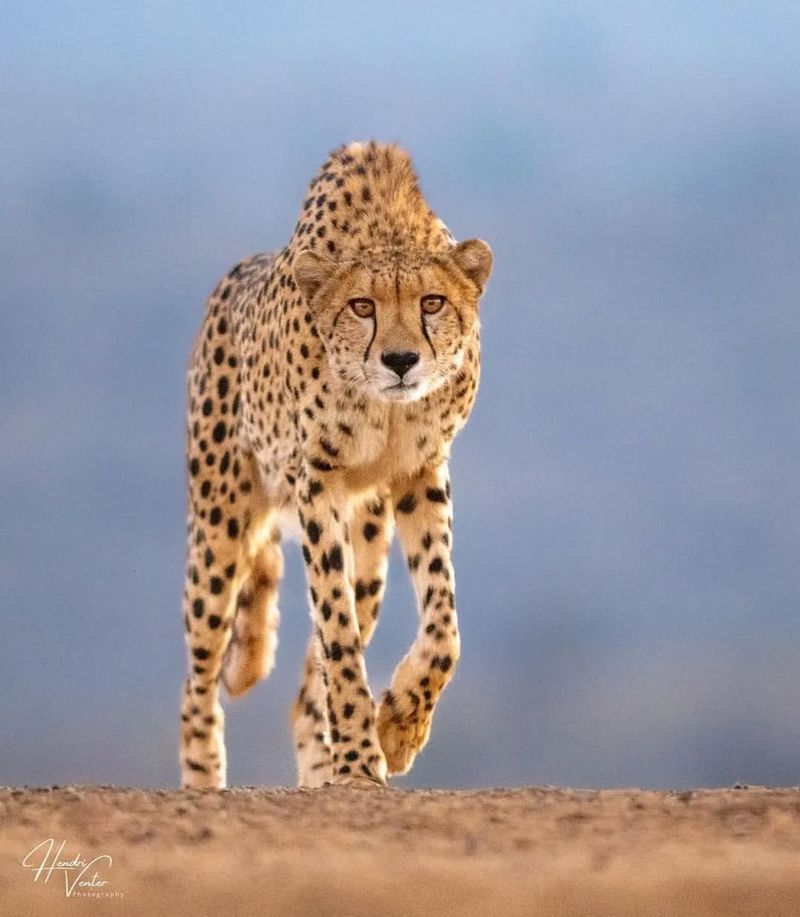
The cheetah holds the title as the fastest land animal, reaching speeds of up to 75 mph.
Its lightweight body and long legs are designed for speed, while the distinctive black “tear stripes” help reduce glare and improve focus on prey.
A cheetah’s chase is typically brief, lasting less than a minute, as they aim to capture their prey quickly before overheating.
In addition to speed, cheetahs are highly agile, able to make sharp turns at high speeds with the help of their tail, which acts as a rudder.
Though they primarily hunt during the day using their excellent eyesight, their speed is limited by endurance, making them vulnerable to other predators.

